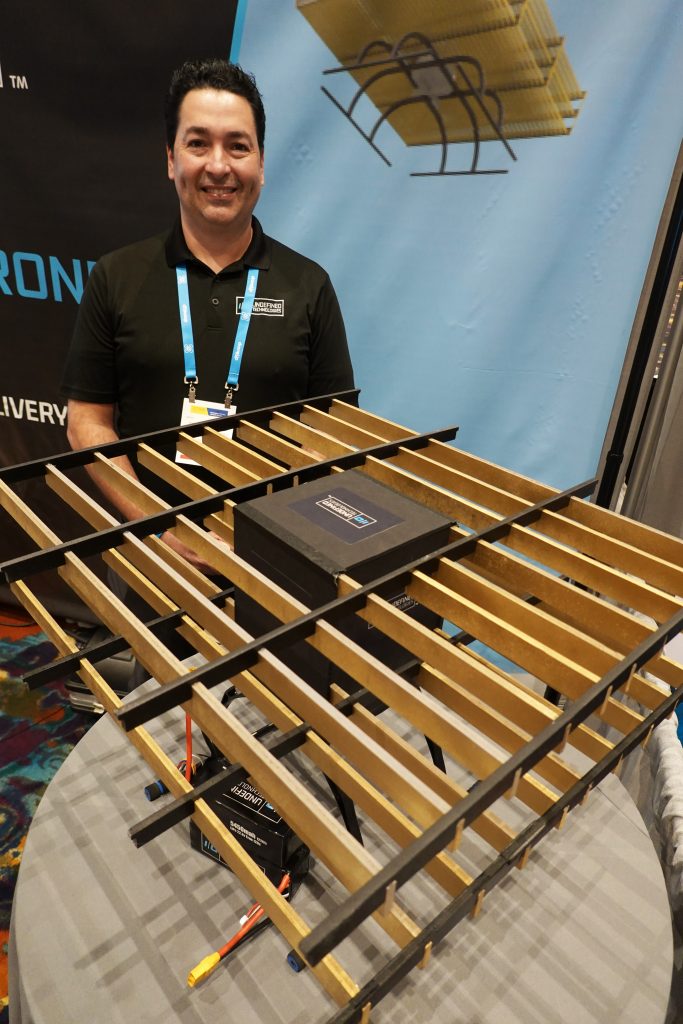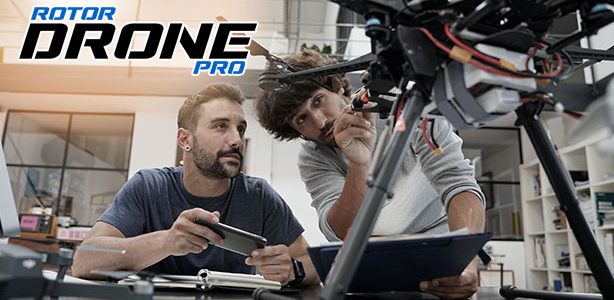No doubt one of the most impressive achievements I’ve seen comes courtesy of a south Florida start-up with the improbable name, “Undefined Technology.” I’ve seen a lot of cool things at shows over the years, but only one or two that changed my perception of what is fundamentally possible within the laws of physics. That is what this company and its founder, Tomas Pribanic, managed to achieve.
Pribanic bills his creation as a quiet alternative to the buzzing propellers that keep modern drones aloft.
“It isn’t completely silent, but it isn’t loud enough to wake up my dog,” he said with a laugh.

His prototype vaguely resembles a conventional multirotor, except with a collection of thin metal grills in place of propellers. These are lightweight, flexible and made of an exotic material that looks like it was borrowed from a deep-space probe, having a hue that falls somewhere between copper and gold. And, well, it flies — without wings, rotors or any other visible means of propulsion — which prompted an immediate question from me: “How is this possible?”
The short answer is, “Science!” For a slightly longer answer, I’ll defer to Pribanic himself: “It’s an ion-propelled drone that energizes the air around itself to generate propulsion downward to lift the craft. It uses the existing ions in the atmosphere, that we are breathing right now, and enhances the number of those ions. Then, by using the laws of attraction and repulsion, it moves the air to achieve thrust.”
In case it has been a few years since you took chemistry, here is a brief review of the underlying science. An ion is a molecule with a magnetic charge, which can be either positive or negative. The metallic grid which constitutes the drone’s propulsion system, for example, might give off a negative charge — like the north pole of a magnet — and pull all of the positively charged ions in the atmosphere towards itself. These ions are accelerated through this process in sufficient numbers and with sufficient speed to offset the weight of the drone and lift it into the air.
This type of propulsion has been used before — on satellites and deep-space probes carrying a heavy gas like xenon on board for reaction mass while flying weightless through the void of space — but I had never conceived of the possibility that it would work in Earth’s atmosphere and gravity. When I asked for further details, Pribanic demurred, explaining that his patents on the technology had not yet been registered.
He was willing to explain how the aircraft was able to maneuver, however, and the process is something like a conventional multirotor: “We control the different quadrants of the aircraft to provide different amounts of lift, and that allows us to move left, right, forward and backward. Yaw is a little more tricky.”
The prototype aircraft is five feet across and stands about 18 inches tall. It can fly for up to 15 minutes carrying a two-pound payload. To be sure, that wouldn’t be great performance for a propeller-driven aircraft of the same size, but for a technology indistinguishable from magic — to borrow a phrase from Arthur C. Clarke — it’s pretty impressive.
“The feedback that we have received from the industry has been great,” said Pribanic. “What they really want is a drone that is silent.”
BY PATRICK SHERMAN




















The Pribanic drone has a loud ducted fan for lift. Ion propulsion for the most part, can’t lift 1/100 that much weight yet. I should know because I have the patents for the only ones that really can lift their power supplies. There are more that 30 videos of the real thing online. Please see US Patent Numbers 10,119,527 and 11,161,631. The patents cover all ion propelled aircraft that lift their power supplies against Earth’s gravity.
Just saw the patents, why don’t you challenge undefined technologies and make your own company with your patent design? More effective.
Hi Alex,
Since Pribanic now has a published patent application that admits his craft gets either a large portion (or all) of its lift from a ducted fan, there isn’t anything more I can say. I do have my own company, Electron Air LLC. It’s for ion propelled vehicles with onboard power. They are still in the working prototype stages, but constantly improving. Here is the site: https://wwwelectronairllc.org.
Thanks for the suggestions!